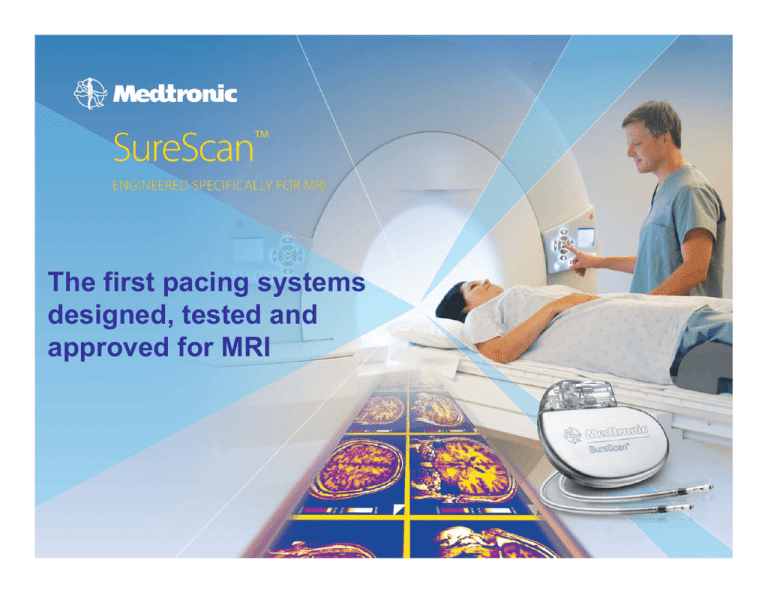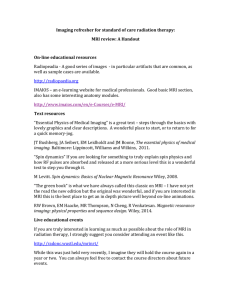The first pacing systems designed, tested and approved for MRI
advertisement

The first pacing systems designed, tested and approved for MRI MRI Procedures are increasing “MRI is unmatched and irreplaceable for diagnosis of cancer and neurological disorders. For investigation of the brain and spinal cord, there is simply no suitable alternative in most cases.” – Torsten Sommer, MD, PhD Professor of Radiology Chief, Cardiovascular Imaging University of Bonn Nazarian S. Circulation 2006; 114: 1277-1284 MRI: The diagnostic of Choice CT MRI CT Won’t Do in Many Cases. CT scans have limited contrast ability and bony artifacts may distort or obscure abnormalities “In view of the potential high doses, CT should only be carried out after proper clinical justification by an experienced radiologist”1 1 European Commission. Radiation Protection 118 - Referral guidelines for imaging, 2000. A large unmet clinical need • The likelihood of MRI indication doubles >65 years1 • 50-75% of device patients will be denied an MRI over the life of their device2 • In a 12 months follow-up period 17 % of pacemaker patients required diagnostic MRI3 1. Magnetic Resonance Imaging (MRI) Equipment – A Global Strategic Business Report, Global Industry Analysts, Inc., San Jose, CA. 2002 2. Roguin A. Europace 2008; 10: 336–346 3. Sakakibara et al., Jpn Heart J 1999 What happens when pacing patients need an MRI? They are almost certainly turned away! MRI Glossary • MRI Safe: The item is safe for use in MRI under all conditions • MRI Unsafe: The item is not safe for use in MRI under any conditions • MRI Conditional: The item is safe for use in MRI only under certain conditions





